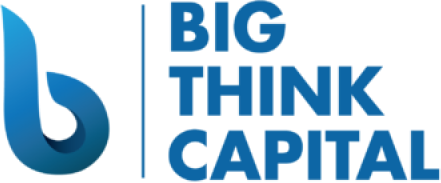Decoding the Impact of Fed’s New Interest Rate Policy on Small Business Loans: Strategies to Navigate and Thrive
Estimated Reading Time: 6 minutes
- Understand the impact of rising interest rates on small business loans.
- Analyze different types of loans and their responses to interest rate changes.
- Develop strategies to manage finances effectively in a high-interest environment.
Table of Contents
- Understanding the Federal Reserve’s Interest Rate Policy
- Analyzing Loan Types and Their Responses to Rate Changes
- Strategizing for Financial Success Amid Rising Rates
- Preparing for the Future
- Consulting with Big Think Capital
- FAQ
Understanding the Federal Reserve’s Interest Rate Policy
The Federal Reserve, often referred to as the Fed, plays a crucial role in shaping the nation’s monetary policy by adjusting the federal funds rate, which influences other interest rates across the economy. With the goal of controlling inflation and stabilizing the economy, the Fed can lower rates to stimulate growth or raise them to cool down an overheating economy.
As of 2025, the Fed has adopted a tightening monetary policy in response to elevated inflation rates. According to the Bureau of Labor Statistics, inflation remains above the 2% target, with the Consumer Price Index (CPI) showing rises of around 3.7% year-over-year. To combat this, the Fed has raised its benchmark rate to 5.25%. This increase has a ripple effect on borrowing costs for small businesses.
For small businesses seeking funding, here are the key impacts to consider:
- Higher Borrowing Costs: As interest rates rise, so do the costs of loans. Whether exploring SBA loans, equipment financing, or merchant cash advances, business owners will notice increased interest rates, resulting in higher monthly payments.
- Decreased Borrowing Capacity: Higher rates may discourage some lenders from extending credit, ultimately leading to stricter lending standards. Businesses may find it harder to secure the funding they need to operate or grow.
- Cash Flow Management: Rising interest expenses can strain cash flow, making it vital for businesses to assess their financial strategies and stay on top of their budget.
Analyzing Loan Types and Their Responses to Rate Changes
Understanding how different types of business loans respond to interest rate hikes is essential for making informed borrowing decisions. Here’s a breakdown of popular loan types and their typical costs in a high-interest environment:
1. Working Capital Advances
Working capital advances are short-term loans that provide quick cash. While they can help with urgent financial needs, interest rates have seen increases along with Fed rate hikes. Business owners should take extra care when evaluating their repayment terms and consider the cost of borrowing.
2. SBA Loans
SBA loans are seen as a reliable funding source for small businesses, but they are also influenced by interest rate changes. In 2025, interest rates on SBA 7(a) loans have climbed to around 9% to 10%, making them less attractive than before. Despite this, they still offer longer repayment terms and lower down payments compared to other options.
3. Equipment Financing
Investing in new equipment is crucial for many businesses, but the increased rates can impact equipment financing options. Typically, equipment loans will see rates around 8% to 12%, which can raise overall project costs. It’s advisable to shop around and negotiate terms to secure favorable financing.
4. Merchant Cash Advances
Merchant cash advances provide quick access to cash based on future sales but typically come with higher costs. As interest rates rise, businesses should tread carefully and ensure they have a clear repayment plan, understanding that these loans can become more expensive over time.
5. Lines of Credit
Business lines of credit are flexible financing solutions but can also be affected by interest rate hikes. Interest rates on lines of credit may reach around 10% or higher, which can impact your decision to draw on your credit line.
Strategizing for Financial Success Amid Rising Rates
Understanding the implications of the Fed’s new interest rate policy is one side of the coin. The other side involves developing effective strategies for navigating these challenges. Here are three practical takeaways:
1. Reevaluate Your Financing Options
As interest rates fluctuate, it is crucial to periodically reassess your financing options. Analyze your current financing arrangements and consider locking in fixed rates where possible. Fixed-rate loans insulate your business from future interest hikes, offering predictability in your monthly payments.
2. Strengthen Cash Flow Management
A focus on cash flow management becomes more critical during times of rising interest rates. Review your expenditures, cut unnecessary costs, and ensure your revenue streams are stable. Establishing a financial buffer can also help manage potential cash shortfalls.
3. Build Relationships with Lenders
Develop strong relationships with your financial institutions. A trusted partnership with lenders can provide more favorable terms and access to additional resources. Open communication makes it easier to discuss your financial needs, especially if you encounter challenges during borrowing.
Preparing for the Future
As we progress through 2025, small businesses must remain agile in response to the evolving interest rate landscape. The Fed’s new policy is designed to combat inflation, but it demands proactive measures from business owners to manage their finances effectively.
Consulting with Big Think Capital
Big Think Capital is committed to supporting small businesses through financing challenges. Our team of funding experts can guide you through the loan process, helping you find the best solutions tailored to your business needs.
If you are exploring funding opportunities or looking for tailored advice, we invite you to reach out and speak with one of our knowledgeable representatives. Together, we can create a robust financial strategy that positions your business for success, regardless of interest rate fluctuations.
Visit us at bigthinkcapital.com to learn more about our financing options and let us help you secure the funding your business deserves.
FAQ
What is the Federal Reserve’s role in interest rates?
The Federal Reserve adjusts the federal funds rate to control inflation and stabilize the economy, influencing interest rates across the economy.
How do rising interest rates affect small businesses?
Rising rates lead to higher borrowing costs, decreased borrowing capacity, and challenges in cash flow management for small businesses.
What strategies can small business owners adopt in a high-interest environment?
Small business owners should reevaluate financing options, strengthen cash flow management, and build relationships with lenders to navigate these challenges effectively.






